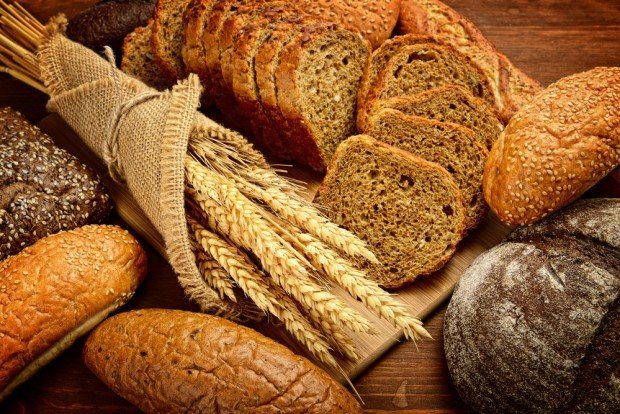So you’re on a low-carb diet or about to start one. But, you don’t want to totally give up carbs. There are many low-carb diets that cut out carbs completely. However, in the long term, this is not a sustainable way to eat. If you are on a low-carb diet that allows for grains or you simply want to reduce your intake of carbohydrates, here are some examples of grains that are low-carb friendly. It’s vital to remember that not all carbs are created equal and some should be avoided. In fact, carbs can cause huge problems in the body.
What’s the fuss about grains?
Many of us avoid grains as a matter of principle. We’ve been made to believe that they are automatically bad and are to be avoided at all costs. However, this isn’t true across the board. Cereal grains, according to Healthline, are the world’s largest source of energy. The most commonly eaten grains are “wheat, rice, and corn”. Despite being the world’s main source of energy, they remain controversial. Some specialists see grains as an essential part of a healthy, balanced diet. Others somewhat demonize them and suggest that, in actual fact, they are bad for us.
With all these differing opinions, it’s hard to know what to do. US health authorities recommend women consume a maximum of 5-6 servings of grains per day, and men consume 6-8. The paleo diet, which has recently gained both popularity and celebrity acclaim, avoids grain completely. This only goes for the traditional paleo diet and some variations do allow for a limited intake of certain grains. However, it’s absolutely vital that you understand what grains you are consuming. The problem with the grains that we consume these days is that they are nothing like the ancient grains our ancestors used to consume.
Diseases and DNA

Zadorozhnyi Viktor/Shutterstock
It may seem that diseases and DNA don’t seem to fit into an article about grains. However, it’s actually a vital component of why most grains are so bad for us. A Human Genome Project study found that, contrary to popular belief, diseases are not written into our DNA. Many of us think that most of the common diseases we experience these days are due to errors in the gene sequence. One of the most common of these diseases believed to be associated with gene errors is celiac disease.
Errors in gene sequencing are much rarer than you might think with “less than 1% of diseases falling into this category”. But, if these diseases aren’t written into our DNA, then why are we as a society so badly afflicted with such a wide variety of diseases. It seems that the food we eat and our environments are likely to be to blame. As a society, our insulin levels are chronically elevated. But what does this mean? Epigenetics has, at large, changed the way we view the food we eat. We must be careful about what we put in our bodies
Insulin, insulin resistance, and metabolic syndrome
Insulin’s main purpose is to regulate the sugar levels in the blood when glucose is present. When there is too much glucose in the blood, insulin will store it as fat and the body is unable to make use of it. If glucose levels are constantly high, the cells in the body become resistant to insulin. When this happens, the pancreas steps in to produce more insulin in order to bombard the cells. This ultimately becomes a vicious cycle and causes what we now refer to as a metabolic syndrome. Metabolic syndrome comes as a direct result of consuming too many carbohydrates, specifically the refined type.
What even are grains?
Cereal grains are most commonly simply referred to as grains. Grains are “small, hard and edible dry seeds”. They grow on grass-like plants which are called cereals. They’re a staple food group and this is mostly because of the widespread availability. They’re incredibly useful as they can feed both humans and livestock. They can also be processed and turned into a wide variety of different food products.
Pseudo-cereals
Some ‘grains’ aren’t actually grains at all, but this is not negative at all. Quite the opposite. What it means is that the grain is a seed that is nutritionally similar and consumed in a similar way to cereal grains. These are known as pseudo-cereals. Quinoa and barley are examples of pseudo-cereals. Quinoa is a South American grain that has been hailed as a superfood.
This ancient grain is packed with more vitamins, minerals, protein, as well as healthy fats, and fiber than popular grains such as whole wheat, oats, and many others. Ka’chava (the plant-based protein mix), for example, packs a ton of awesome quinoa protein – go check out the review on Fitness Baddies.
Why wheat is a problem
Wheat is the third largest of all the crops in the world after rice and corn. This is mainly because all of these grains can withstand severe climates. Wheat was first found about 9000 years ago and it’s widely believed that very few nations could survive a year without it.

The main reason for its popularity is that it can be stored for years in kernel form and is easy to transport. It is also easy to process and transform into a wide variety of foods. It’s also still widely believed to be nutritious and its high carbohydrate content means that it is filling.
Modern-day wheat is not healthy
Wheat, in and of itself, isn’t actually the problem. It’s the modern wheat that’s the issue. It’s not anything like the ancient grains. Biological manipulation has altered it so much that it is nowhere near as beneficial to our bodies as it might have been in its ancient form.
Why you need more fiber from grains
Like most foods, not all grains are created equal. There are several grains that are high in fiber and can really benefit the body. Generally, grains that are high in fiber can be eaten in moderation as part of a carb-controlled diet. This is because high fiber grains tend to contain a lower proportion of carbohydrates. Fiber is also hugely beneficial – not just for your digestive system but also for weight loss.
Not all grains are equal
There are two distinct types of grains – whole grains and refined grains. Whole grains are generally better for you than refined grains as they provide fiber. A whole grain is made up of three parts, namely the bran, the germ, and the endosperm.
Bran: The bran is the hard, external layer of the grain. This section contains fiber, minerals, and antioxidants.
Germ: This is the core of the grain and contains the “carbs, fats, proteins, vitamins, minerals, as well as antioxidants and various phytonutrients”.
Endosperm: The largest part of the grain, the endosperm contains the most carbs. These carbs are in the form of starch.
Refined grains have had the bran and germ removed and contain only the endosperm. The endosperm is packed full of sugar and starch, making them very unhealthy. Many of the grains we eat are refined and have been ground down into a very fine flour and are highly processed. Labels on packaging can be extremely misleading. Many breakfast cereals are advertised as ‘whole grain’. However, they have often been ground down into a fine flour and will thus have a similar metabolic effect as refined carbs.
Are grains really that bad?
Refined grains often contain ‘empty calories’ and are nutrient-poor. Many whole grains, however, are highly nutritious and nutrient-dense. In general, whole grains tend to be high in nutrients such as “fiber, B vitamins, magnesium, iron, phosphorus, manganese, and selenium”. Though this is generally true, it does depend on the type of grain. Grains like oats and whole wheat are packed with nutrients. On the other hand, rice and corn are not very nutritious even in their whole form. Refined grains are often enriched with “nutrients like iron, folate, and B vitamins” in order to replace some of the lost nutrients.
The dangers of refined grains

Evan Lorne/Shutterstock
Refined grains are generally very unhealthy and can lead to a spike in blood sugar due to the fact that they are broken down by the body so fast. The fiber, removed during processing, is what slows the release of carbs and sugars. This makes digestion more difficult for the body and prevents the blood sugar spike. As long as you are eating, at least mostly, the ‘right’ grains, they aren’t bad for you at all. In fact, consumption of these grains is to be encouraged.
Examples of healthier grains
- Whole-grain rye
- Quinoa
- Bulgur wheat
- Brown rice
- Oatmeal
- Popcorn
- Buckwheat
- Millet
- Whole barley
- Spelt
The modern farming process is a real concern
The real issue here is the modern farming process. The flour that we use these days is completely devoid of nutrients. It is devoid of pests but this is largely because there is nothing to be gained from it. Milled flour was the very first processed food. The issue with these processed foods is that all the goodness has been removed. In fact, white flour is so devoid of nutrients that it’s actually harmful. The grains that we eat now have been ‘created’ and manipulated. This ‘new’ wheat is weather and pest-resistant as well as easy to harvest. Biologically, it’s miles away from its ancient form.
This means that we can no longer rely on wheat and other highly processed products for our fiber intake.
References
https://www.healthline.com/nutrition/low-carb-grains
https://www.healthline.com/nutrition/grains-good-or-bad#TOC_TITLE_HDR_3



![women [longevity live]](https://longevitylive.com/wp-content/uploads/2020/01/photo-of-women-walking-down-the-street-1116984-100x100.jpg)










